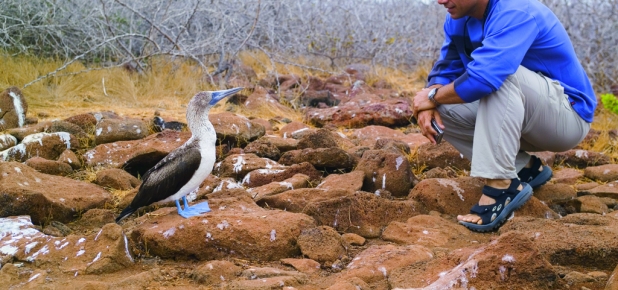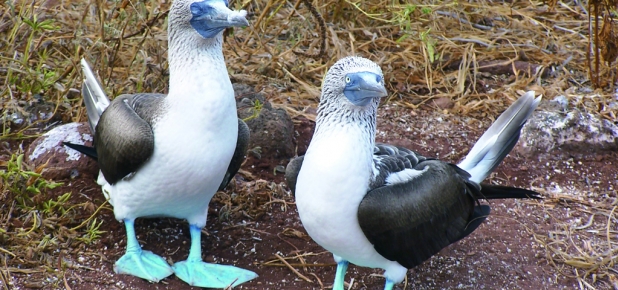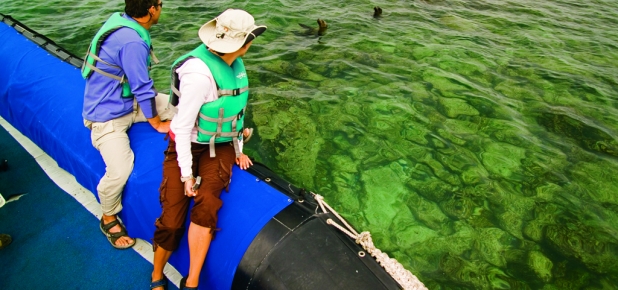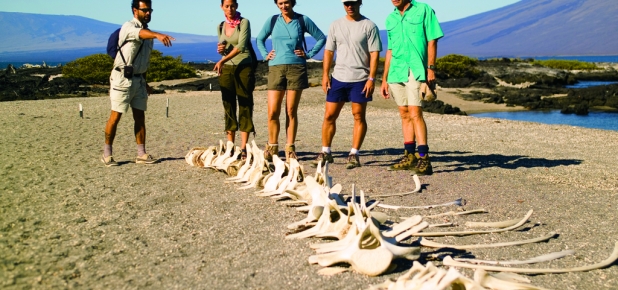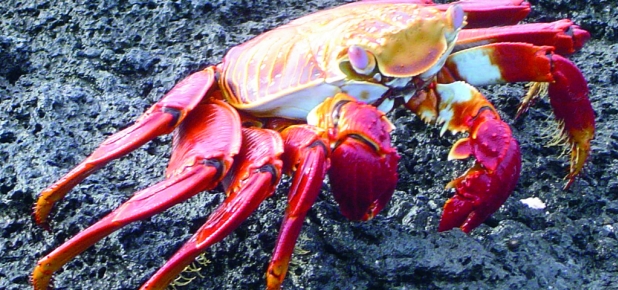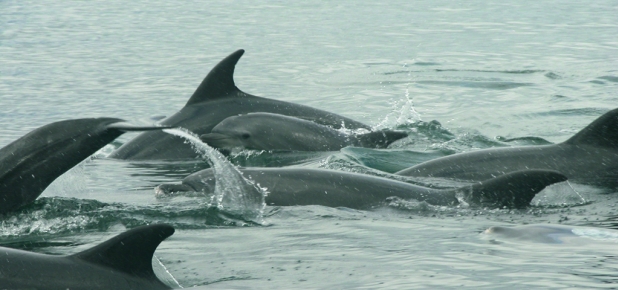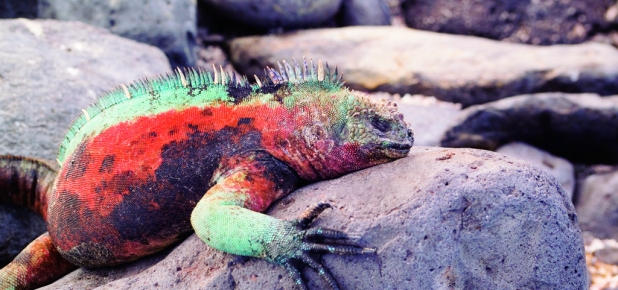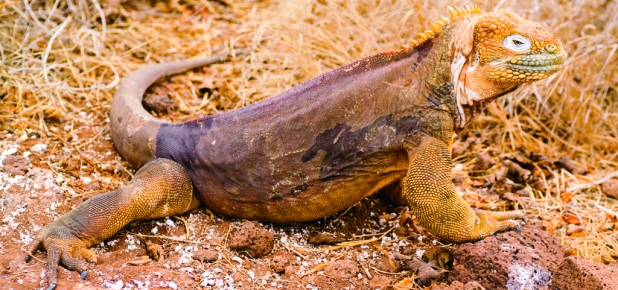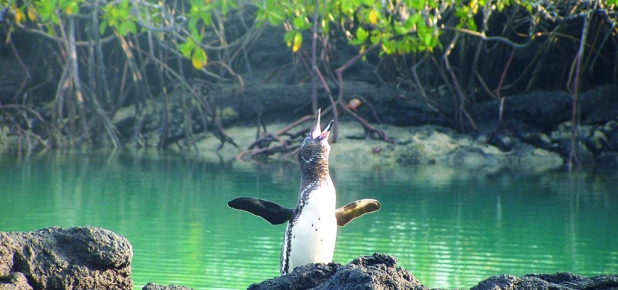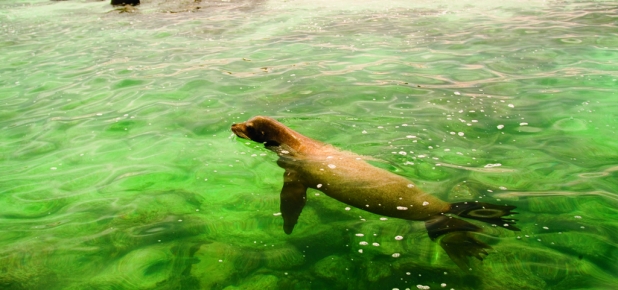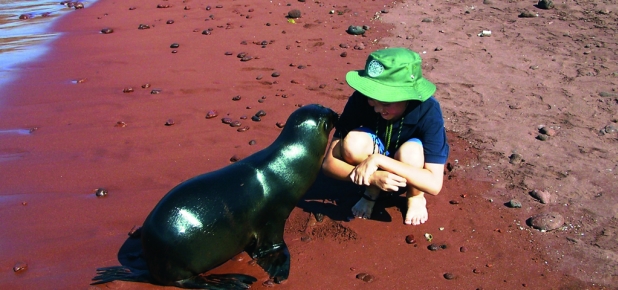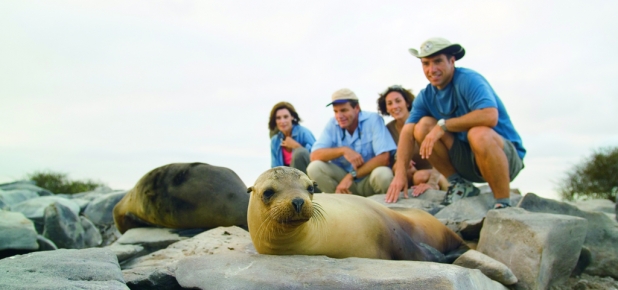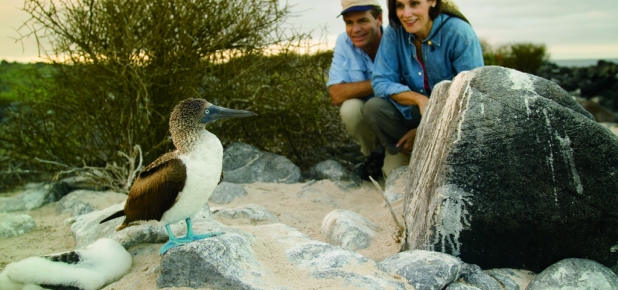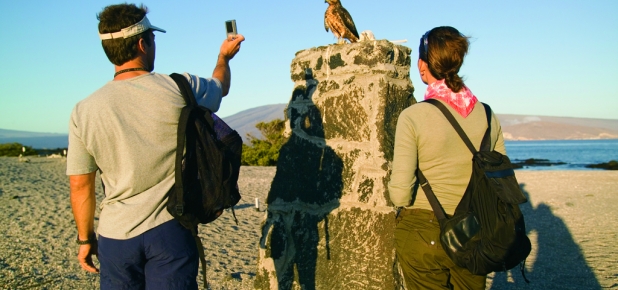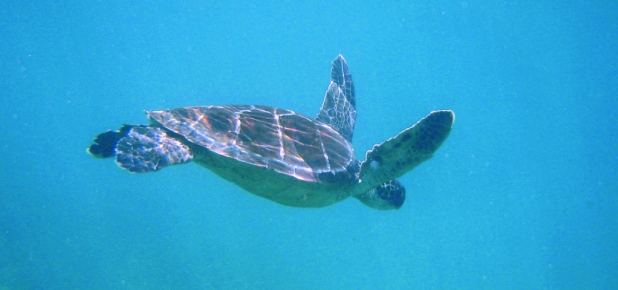Galapagos Cruises
If there were a dozen or so dinosaurs left on earth, you would probably find them all somewhere in the Galapagos Islands archipelago. Visiting these islands is not just a history course on the environment; it is Mother Nature’s graduate school in the process of evolution. The Galapagos Islands archipelago forms the most environmentally diverse and complex world on the planet, in which conditions have remained the same for thousands of years.
Sitting on the equator, approximately 600 miles from the Ecuadorian coast, the archipelago is comprised of 13 large volcanic islands, six smaller islands and 107 rocks and islets. Five of the islands are inhabited, and two, Fernandina and Isabela are still active volcanos where the ongoing seismic and volcanic activity reflect the processes that formed the islands. Since the islands were never attached to the mainland, the flora and fauna evolved dramatically on their own. Species of plants and animals typical of the islands have had no predators during that time, and therefore, the animals show no fear in the presence of humans. This is what makes the Galapagos so fascinating to tourist, where visitors can have an up close and personal experience with nature.
Your tour may start at the southern and eastern islands where you can enjoy fantastic snorkeling at Espanola’s Gardner Bay and Floreana’s Devil’s Crown, a remnant of a dormant volcano. A snorkeling adventure in the turquoise lagoon on Santa Fe may reward you with encounters with playful sea lion pups. A walk on Santa Fe reveals Galapagos hawks, swallow-tailed gulls and red billed tropicbirds. While on Santa Fe, you have to visit the Charles Darwin Research Station and the highland reserve at Cerro Mesa. Put on your hiking shoes and walk with the land iguanas of South Plaza, or search for the giant 500 pound Tortoises that live in the highlands of Santa Cruz.
You can experience an incredible natural history tour through the dramatic volcanic landscapes of the Western Islands, where you can explore pristine Fernandina Island, a huge shield volcano with a shoreline full of flightless cormorants, Galapagos sea lions, Galapagos penguins, Galapagos hawks and bright red-orange Sally Lightfoot Crabs. Sailing across Bolivar Channel, you will have the opportunity to view spouting whales. Arriving on Santiago’s golden Espumilla Beach, you can witness a green sea turtle nesting site, or watch sea iguanas roam the shore line. On Isabela Island, you can hike to a flamingo lagoon, or set out on a zodiac ride around Elizabeth Bay, where sea turtles swim by.
An active journey to this incredibly fascinating “world unto itself,” as Darwin called it, will be remembered for a lifetime.
